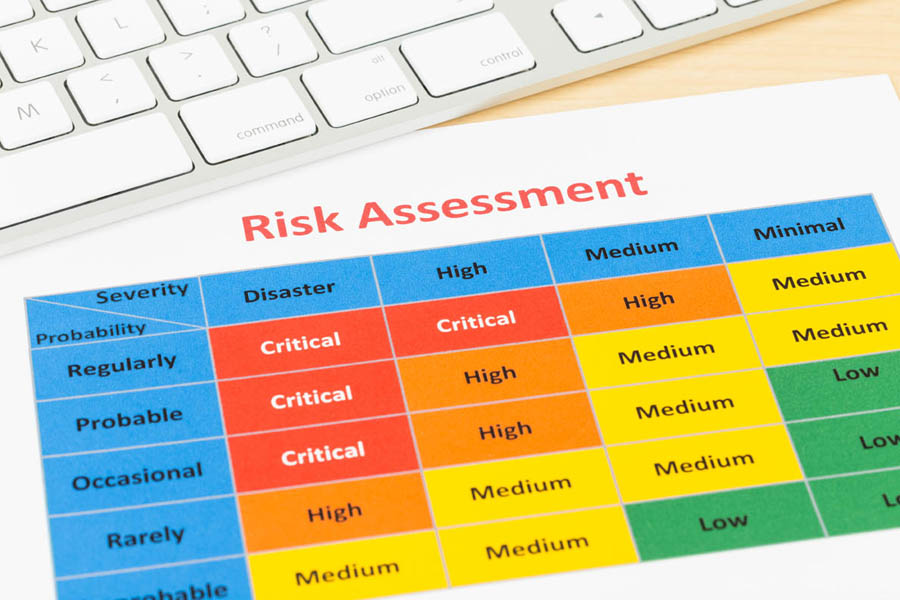While many of us are quick to wedge fire doors open when it’s convenient for us, they are lifesavers if an accidental fire breaks out.
Fire doors can seem like a nuisance at times, but having strong working fire doors at key locations in your building can make all the difference, slowing down the spread of fires and giving people precious moments to exit the building and call the fire services.
Fire doors are an essential element of fire compartmentation and fire prevention. Here are a few things you should know if you manage a property or office and are responsible for improving fire safety.
What Are the Rules?
Under the Regulatory Reform (Fire Safety) Order 2005 (FSO), landlords have a responsibility to ensure their properties and tenants are safe. This also covers commercial spaces where employees spend their time throughout the day.
The ‘responsible person, who could be the building owner, fire safety officer or property manager, has a legal responsibility under the FSO and can be criminally prosecuted if they do not fulfil their duties. While there has been a heavy focus on high rise residential blocks when it comes to fire regulations, the same scrutiny also applies to non-domestic buildings.
Commercial units and office spaces are subject to the Regulatory Reform (Fire Safety) Order: 2005. The responsibility extends to all non-domestic buildings, including warehouses, packing stations and manufacturing areas.
The RRO covers all aspects of fire safety including fire doors, which are deemed to serve two vital functions in a fire, which are to stop fire and smoke from spreading and, when opened, providing the occupants with a means of escape.
If you compromise either of these two key functions you may be putting people’s lives at risk as well as yourself when it comes to severe penalties and fines. As a landlord or business owner, you can get into quite serious trouble if you fail to address fire doors sufficiently in your fire risk assessment reports.
Where Should Fire Doors be Located?
Fire doors shouldn’t be placed just anywhere. The design of a building, the nature of its business and contents (flammable objects, chemicals etc.) and the particular location of certain rooms will all determine where doors should be located and the type of door that’s needed.
Certain fire doors can offer protection for longer than 60 minutes if needed. This is often the preferred choice when the preservation of a property’s integrity is paramount. However, many fire doors that offer 30-minute protection are sufficient, as this is deemed enough time for people to evacuate the building.
Fire Door Requirements
- Homes with more than two storeys must have a fire door separating the stairwell and every habitable room (excluding toilets or bathrooms). This includes rooms at every level of the house.
- Fire doors are also mandatory in loft conversions and between a house and a garage.
- Business and residential sections of mixed-use buildings must be separated by fire doors.
- Fire doors are required to have the correct signage for non-domestic dwelling, on both sides of the door, indicating that the door should be kept closed.
How to Build an Effective Fire Prevention and Risk Reduction Strategy
Whether it’s fire doors or alarms, the key to putting the right equipment and tools in place is to first perform a robust fire risk assessment that evaluates your entire property and identifies the kind of system and strategies that you must put in place to reduce the fire dangers.
Both residential and office fire risk assessments can be carried out by yourself if you have the right knowledge and training, but it is highly advised that you work with a professional assessor who can make sure your property meets fire safety regulations.
If you have recently taken on the responsibility of your property, it is necessary to carefully review the contents of the latest assessment that was carried out. These documents must always be accurate and regularly updated in line with any changes to your building or work premises.
One of the most important things about fire doors is that they’re used properly. As such, you must make sure that all your tenants or employees are always aware of the rules regarding shutting and opening fire doors.
Need Assistance with Your Fire Prevention Strategy?
The best ways to safeguard yourself and your building are to entrust your residential or office fire risk assessment to reliable and professional fire risk assessors like us at UK-Fire Risk Assessments. We’ll help you to carry out a comprehensive fire risk assessment and give you instructions about how to protect your property from fires and implement the right emergency strategies.

